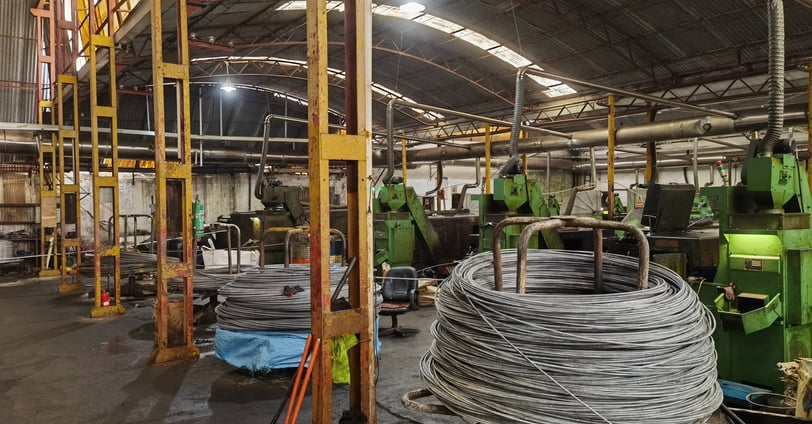From Factory Floor to Final Fix: How Custom Fasteners Bring Designs to Life
5/3/20252 min read


Rethinking Fasteners in Modern Design
Fasteners may be small, but their role in product design is anything but minor. They define how parts come together—affecting not just assembly, but long-term performance, safety, and maintenance. In fact, a poorly chosen fastener can compromise an otherwise excellent design.
Whether it’s bolts, screws, rivets, or clips, every fastener carries its own set of mechanical properties. The right choice depends on more than load requirements—it’s about how the joint behaves under stress, temperature shifts, and even visual expectations. For example, a screw in a smartphone must be as discreet as it is durable, while a rivet in aerospace must endure extremes with zero margin for failure.
In high-performance sectors—automotive, aerospace, and architecture—fasteners are no longer afterthoughts; they’re integral to innovation. As design requirements grow more complex, the fastener becomes an extension of the design itself, tailored to meet both functional and aesthetic goals.
The Custom Fastener Development Process
Designing a custom fastener isn’t just about making something fit—it’s about making something perform better. The process begins with a conversation: What must this component withstand? How should it behave in assembly? What compromises are acceptable—or not?
Material selection is a critical early step, guided by environmental resistance, mechanical stress, and cost constraints. Stainless steel, titanium, engineered polymers—each serves a purpose depending on the context.
Modern prototyping techniques such as additive manufacturing or precision CNC machining enable rapid iteration. Unlike traditional trial-and-error cycles, today’s design loops are faster, more collaborative, and informed by real-world data.
In successful projects, fastener design is a co-engineered process between manufacturers and designers. It’s not just about producing a part—it’s about solving a problem, improving a product, and enabling performance that off-the-shelf options can’t match.
Lessons from the Field: Custom Fasteners in Action
Case 1: Automotive Assembly Optimization
A global carmaker faced a bottleneck in assembly speed. Standard fasteners led to inconsistent torque and frequent rework. By switching to a custom-designed locking fastener with optimized head geometry, assembly time dropped by 30%, and defect rates plummeted—leading to both cost savings and improved crash performance.
Case 2: Consumer Electronics Reinvention
A tech company struggled with fasteners that corroded during shipping. They collaborated on a low-profile, corrosion-resistant fastener that blended seamlessly into the device’s form factor. Result? Fewer warranty claims, better reviews, and a design aesthetic uncompromised by hardware.
These stories illustrate a clear point: custom fasteners aren’t luxury—they’re leverage.
Fasteners of the Future: Where We’re Headed
Tomorrow’s fasteners won’t just hold things together—they’ll communicate, adapt, and evolve.
Smart Fastening: Embedded sensors are turning fasteners into data points—monitoring tension, load, and failure risk in real time. This shift will change maintenance from reactive to predictive, especially in mission-critical systems.
Digital Fabrication: 3D printing is unlocking complex geometries and on-demand production. Designers can now prototype and revise fasteners as fluidly as software—opening doors to function-driven design rather than standard catalog compromises.
Sustainable Engineering: Fasteners are also going green. From recycled alloys to biodegradable polymers, the pressure to reduce material waste and carbon output is reshaping both design and production. Sustainability is no longer an afterthought—it’s a design constraint.
Final Thought
Fasteners are becoming intelligent, efficient, and environmentally conscious. For the designers and engineers of tomorrow, understanding fasteners isn’t optional—it’s strategic. Because in the smallest components, the biggest innovations often begin.
Quality
Specialized fasteners for various industrial applications.
Integrity
Innovation
Email: yuyinuts@xuhonogfastener.com
Whatsupp:+44 7349515311
© xuhong fastener. All rights reserved.
Facebook: yuyinuts-xuhongfastener
Youtube: www.youtube.com/@nutsmona
